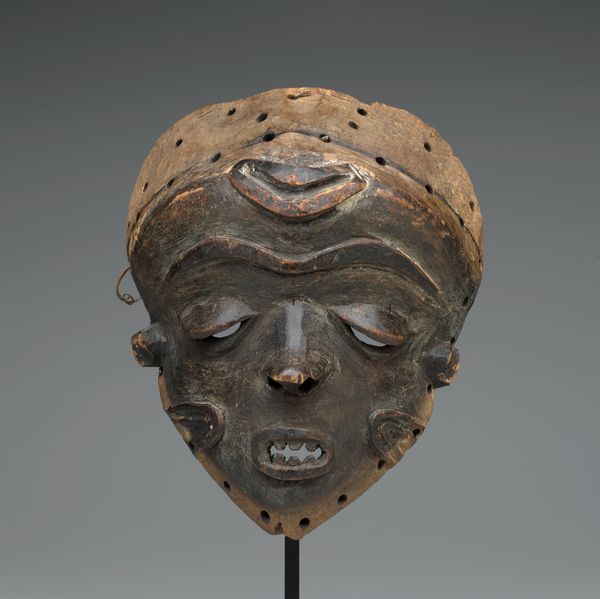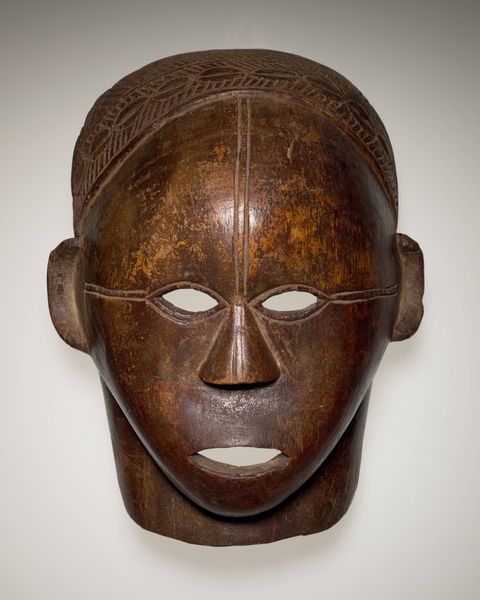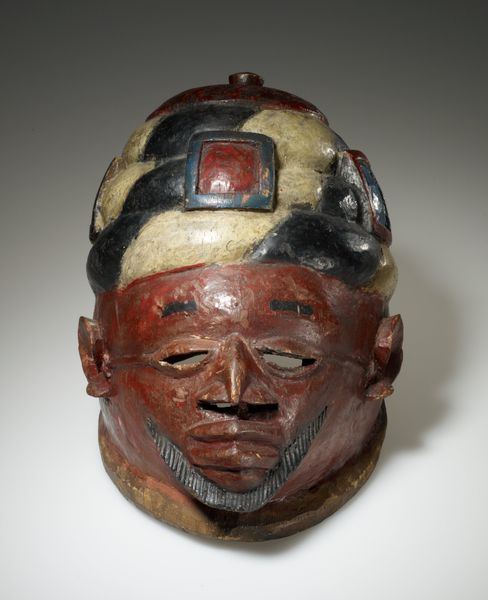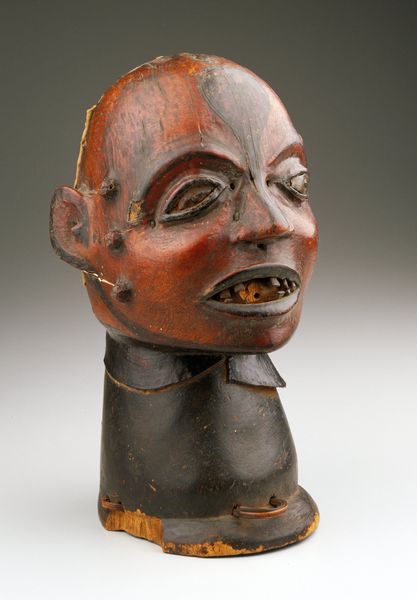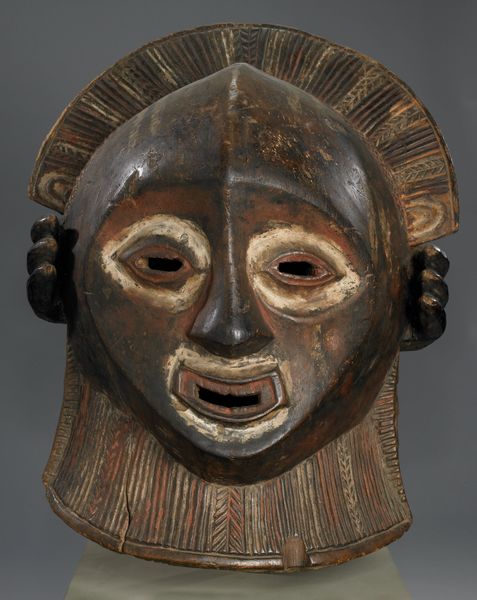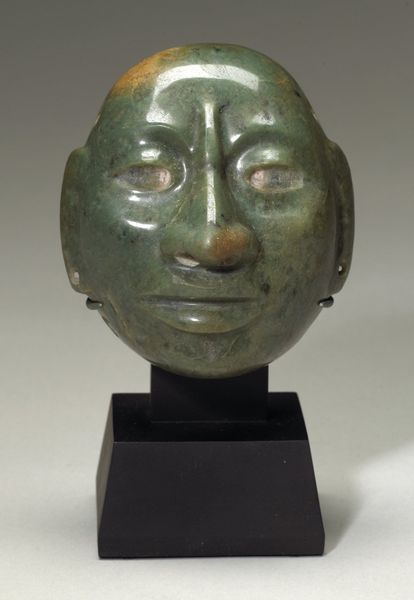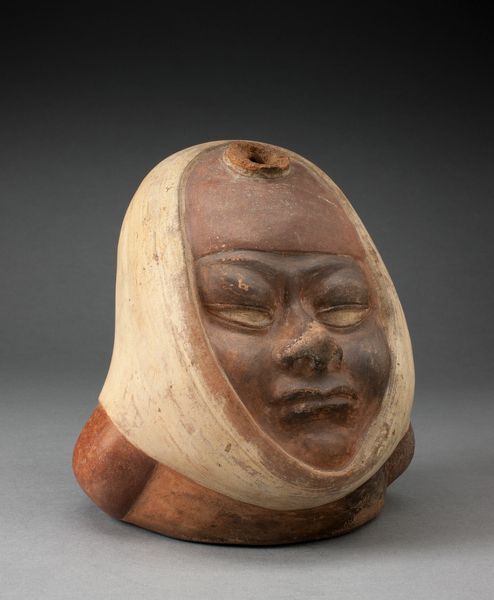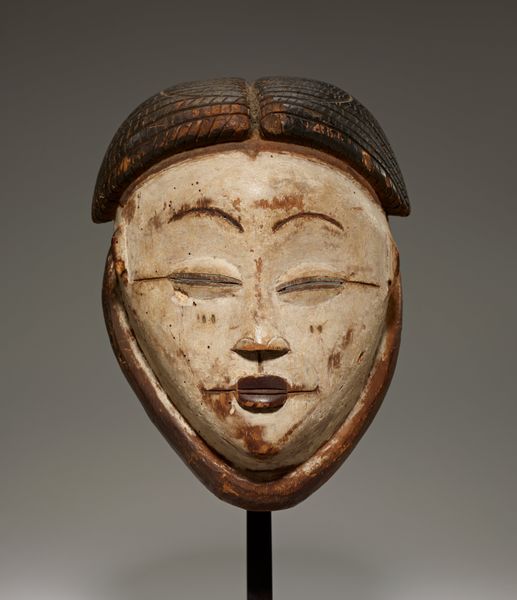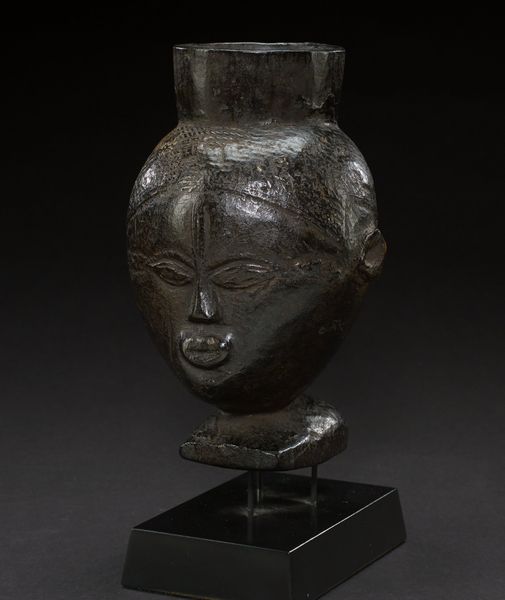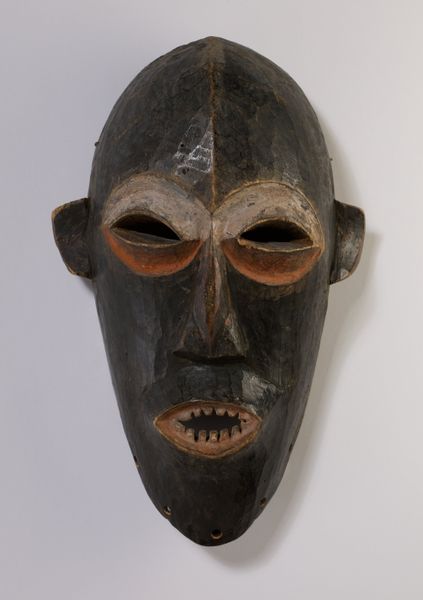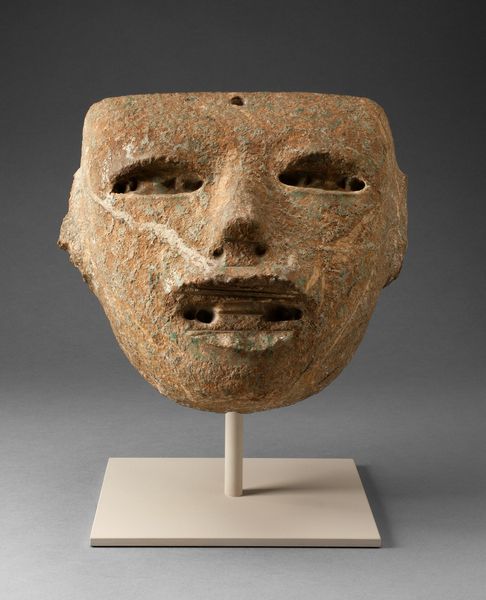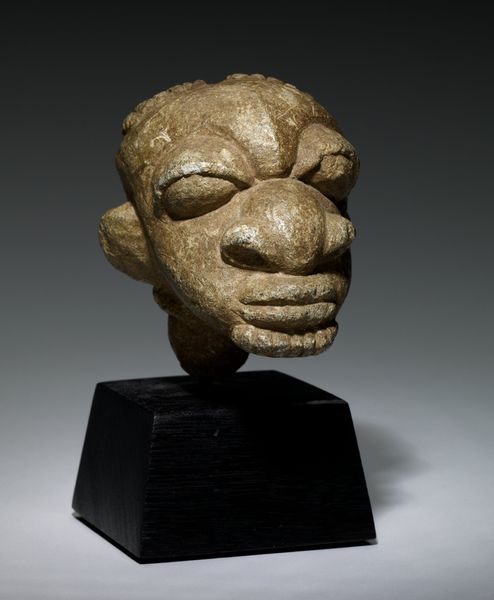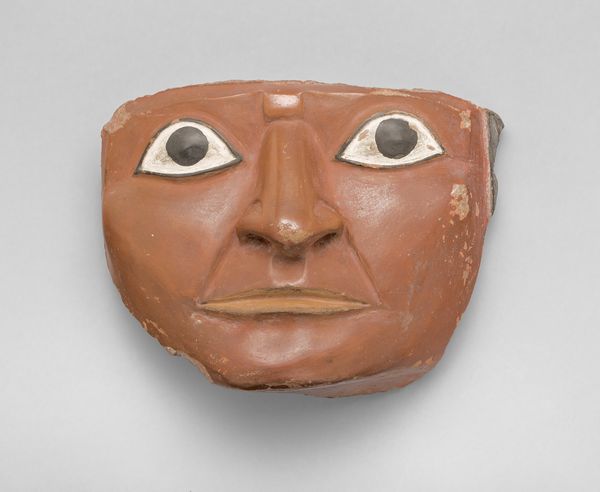
sculpture, wood
#
portrait
#
african-art
#
sculpture
#
figuration
#
sculpture
#
wood
Dimensions: 9 7/8 × 11 3/8 × 11 1/8 in. (25.08 × 28.89 × 28.26 cm)
Copyright: No Known Copyright
Editor: This is a wooden mask from the Makonde people, circa 1960s, now housed at the Minneapolis Institute of Art. It feels so incredibly present, doesn’t it? The expression is almost lifelike. What strikes you most about this piece? Curator: What captivates me is how this mask, born from a specific cultural context, continues to speak across time and space. Look closely – do you see the fine scarification patterns etched into the wood? Editor: Yes, I do. Almost like little repeating triangles. Curator: Precisely! These aren’t merely decorative; they’re visual echoes of identity, status, and perhaps even spiritual roles within the Makonde community. Masks like this weren’t passive objects; they were activated through dance and ritual. Can you imagine the power these symbols would hold? Editor: So, the meaning isn't static. It changes with the context, with the wearer... I never considered that. The mouth being slightly open almost suggests speaking or chanting... Curator: Exactly! And notice the serene, almost knowing, expression in the eyes. It suggests a connection to something beyond the material world, something enduring within the culture. Does the work evoke a sense of familiarity? Perhaps, a shared humanity? Editor: Definitely a sense of familiarity, almost as if I recognize this person. I'll certainly view masks differently going forward. Curator: The mask serves as a poignant reminder of our shared visual language. The Makonde have left us a memory, shaped in wood.
Comments
minneapolisinstituteofart almost 2 years ago
⋮
“Open your ears!” ("shitengamatu") is the phrase the Makonde use to describe this clay mask. Created by a woman for an all-female dance group, it’s one of the rare types of African masks both made and worn by women. Eyebrows and a beard of human hair make it appear more realistic, and indeed it has large, open ears. The command to open them was aimed at young women who had finished their coming-of-age rituals and were about to re-enter society, which is when the mask was danced. Listen to the elder women, they were told, and use their guidance and advice to navigate the new world of adulthood.
Join the conversation
Join millions of artists and users on Artera today and experience the ultimate creative platform.
